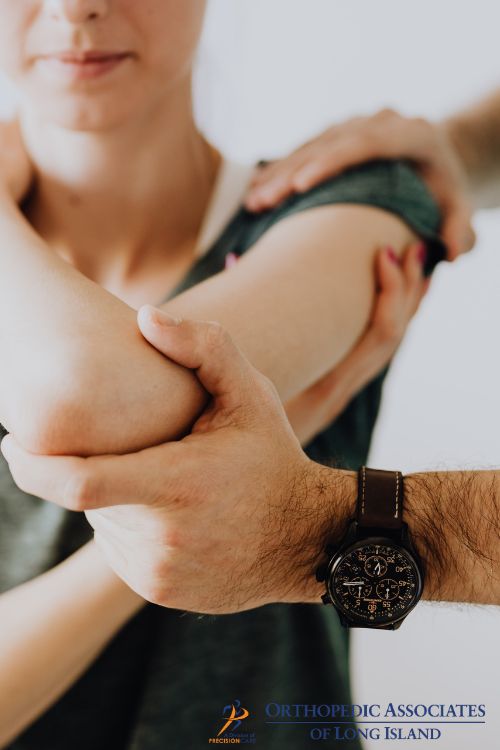What To Know About Joint Replacement Procedures
Individuals facing severe pain and limited mobility often reach a point where surgical intervention becomes a consideration. Factors influencing the decision for surgery typically include conditions such as arthritis or significant injuries that impede daily activities.
Personal experiences and expert medical knowledge are central to understanding the journey through surgical treatment.
Many patients relay transformative accounts of their experiences leading up to and following surgery.
Physical and emotional hurdles frequently accompany surgical procedures, which can substantially impact recovery and overall quality of life.
Sharing distinct recovery strategies helps offer guidance to those on this path.
What Should I Expect From Joint Replacement Procedure?
Orthopedic Associates of Long Island emphasizes the value of patient education throughout the decision-making process. Seeking qualified professionals and facilities specializing in surgical interventions can significantly contribute to choice viability.
Personalized care tailored to individual needs is essential for achieving satisfactory results during and post-surgery.
Post-surgery, physical therapy plays an integral role in the recovery timeline. Patients typically encounter distinct milestones as they work towards reclaiming strength and mobility.
Being aware of the recovery timeline aids in setting realistic expectations and fosters adherence to rehabilitation protocols.
The emotional impact of surgery should not be overlooked. Following surgical treatment, many individuals report shifts in mental health status. Accessing psychological support resources during the recovery phase can bolster overall well-being and aid in the healing process.
Key insights from personal journeys in surgery underscore the necessity of tailored pain management strategies. Building a support network during recovery can significantly enhance the likelihood of successful rehabilitation.
These perspectives contribute to a deeper comprehension of the surgical experience for those considering this path.


Understanding Your Condition
Ankle and Achilles tendonitis are common conditions that can significantly disrupt daily activities and impact mobility. Pain typically escalates during physical activity, making even simple tasks increasingly difficult.
Swelling is often noticeable around the ankle and heel, contributing to overall discomfort.
Stiffness in these areas may limit the range of motion, further affecting joint flexibility and function.
Awareness of these symptoms is important for early identification of the condition.
Health professionals emphasize that prompt intervention can prevent the development of chronic problems. Overuse and inappropriate footwear frequently contribute to the onset of tendonitis.
Engaging with experienced orthopedic specialists, such as those at OALI, facilitates accurate diagnosis and the creation of personalized treatment plans.
Therapeutic options, including rest, physical therapy, and ice application, can effectively alleviate these symptoms. Timely diagnosis greatly enhances the likelihood of a swift recovery and restores improved mobility.
Addressing these symptoms early on can prevent complications that might arise from untreated tendon.
Signs That Surgery May Be Needed
Identifying key indicators can help determine if surgical intervention is warranted for orthopedic issues.
- Persistent Pain:
- Severe pain that remains constant and does not respond to over-the-counter medications or physical therapy may compel patients to consider the need for surgery.
- Chronic conditions often lead to a struggle with daily tasks, which highlights the importance of recognizing pain as a sign of underlying issues.
- Limited Mobility:
- When joint stiffness or decreased range of motion impedes daily activities, consulting with an orthopedic specialist is advisable.
- Mobility challenges may escalate if left unchecked, making timely medical assessment vital for determining the necessity of surgical solutions.
- Joint Deformity:
- Noticeable changes in joint appearance may indicate surgery is essential to restore function and alleviate pain.
- Patients may not be aware that joint deformities, if not treated promptly, can progress more quickly than expected.
- Failed Conservative Treatments:
- When non-surgical treatments, including cortisone injections and physical therapy, do not yield relief, the option of surgery may need to be revisited.
- Many individuals are surprised to learn that prolonged conservative therapies can sometimes aggravate underlying issues, necessitating more invasive measures like joint replacement.
- Impact on Quality of Life:
- Significant pain and mobility challenges that disrupt everyday living may indicate the need to explore surgical alternatives.
- Patients frequently overlook how orthopedic conditions affect their overall quality of life until substantial function has been compromised.
Noticing any of these signs should prompt a discussion with an orthopedic physician, like those from OALI, who can assess your specific situation. Their multi-specialty team offers compassionate and experienced care tailored to meet a patient’s orthopedic demands.
Awareness of these indicators forms a strong foundation for considering the essential steps needed before undergoing surgery for conditions such as knee replacement.
Individuals experiencing joint pain may find it challenging to ascertain when surgical options, including joint replacement, could be necessary. Consulting with a skilled surgeon can clarify whether surgical intervention is appropriate. Chronic conditions can escalate, leading to severe symptoms like edema and persistent joint pain. Joint replacement surgeries can provide significant relief and restore mobility, making a consultation essential to assess potential surgery and set recovery expectations, including rehabilitation and anesthesia options.
Surgical Intervention for Orthopedic Issues
- Studies show that over 50% of patients with chronic pain consider surgery when conservative treatments fail.
- Research indicates that joint deformities can worsen over time, leading to increased pain and reduced mobility.
- Approximately 30% of individuals with severe joint pain report significant improvements in quality of life after joint replacement surgeries.
- Timely surgical intervention can prevent further complications and improve long-term outcomes for orthopedic patients.
Preparing For Your Surgical Journey
Each component of the surgical process requires careful consideration and preparation. Diagnostic tests are fundamental in determining joint health.
Common modalities like MRI and X-rays provide valuable insights into conditions that may necessitate surgeries, such as total joint replacement or knee replacement surgery.
Engaging in pre-surgery discussions with your orthopedic surgeon is paramount.
Conversations surrounding the risks and benefits associated with surgery establish realistic expectations. Discussing recovery timelines fosters better mental preparation for patients.
Implementing emotional preparation strategies is equally significant. The psychological effects of surgery can be substantial, and support groups offer shared experiences that can provide comfort.
Formulating a reliable support system prior to surgery is beneficial.
Identifying family and friends who can assist with daily tasks proves crucial, especially in navigating mobility challenges following surgery.
Managing expectations involves understanding the recovery process, which is influenced by various health factors. Being aware of potential recovery obstacles prepares patients for their journey.
Executing these preparatory steps significantly enhances the surgical experience.
Recovery depends not only on the procedure but also on thorough pre-operative planning. For those considering total knee replacement, adhering to these guidelines promotes improved outcomes and better joint health.
The Role Of Your Surgeon
Orthopedic practitioners have a significant impact on patients’ mobility and overall well-being. A thorough evaluation of conditions like osteoarthritis or tendonitis is the first step in the treatment process and includes assessing symptoms and physical capabilities.
Surgical options, such as joint replacement, can ultimately enhance the quality of life for many individuals facing chronic joint pain.
Effective communication establishes a strong surgeon-patient relationship.
It is important for patients to understand their treatment choices, including the benefits and risks associated with procedures like hip replacements or knee replacements. Trust in their doctor may foster an environment where patients feel comfortable discussing pain relief and recovery expectations.
- Surgeon’s Responsibilities in Rehabilitation: Post-operative care is fundamental. Surgeons collaborate with physical therapists to develop personalized recovery plans aimed at restoring mobility after surgery.
- Innovative Techniques: The use of advancements such as regenerative medicine can significantly impact surgical outcomes and influence recovery timelines.
Patients frequently inquire about the risks involved in surgical procedures and the anticipated duration of recovery. Having a clear understanding of these factors aids in making informed decisions about their treatment plans.
Orthopedic Surgery
- Approximately 27 million adults in the U. S. are affected by osteoarthritis, making it a leading cause of chronic pain and disability.
- Studies show that effective communication between surgeons and patients can improve satisfaction rates and adherence to post-operative care.
- Joint replacement surgeries, such as hip and knee replacements, have a success rate of over 90% in relieving pain and improving function.
- Regenerative medicine techniques, such as stem cell therapy, are being researched for their potential to enhance healing and recovery after orthopedic surgeries.
Schedule Your Consultation Today
Did you experience a sports injury? Don’t delay in seeking relief. Reach out to us now to book a consultation with our expert team. We’re here to help you restore your strength and embrace a healthier, more active life.